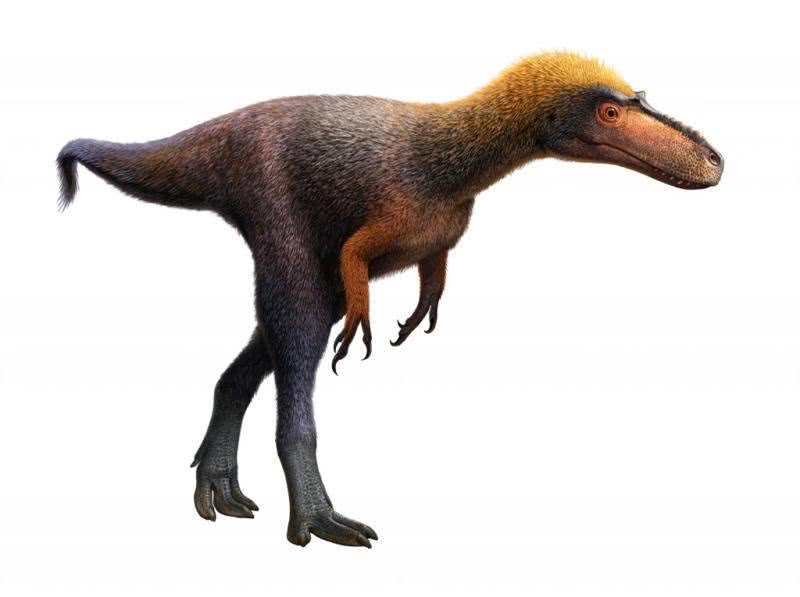Tyrannosaurus Rex Developed from a Child-Sized Dinosaur
History's most frightening dinosaur, the Tyrannosaurus rex, came from a long line of smaller creatures.
Scientists have identified a new relative of the Tyrannosaurus rex, also known as T. rex. Scientists say this relative was only about one-meter high, the height of a small child.
American Sterling Nesbitt, a paleontologist, discovered the dinosaur. He told the Associated Press that if the ancient creature raised its head, an adult human maybe "would be looking at it in the eye."
Nesbitt is with the Virginia Polytechnic Institute and State University in Blacksburg, Virginia. In 1998, he found the creature's remains while serving as a volunteer on a dig in New Mexico with a famous paleontologist. At the time, Nesbitt was just 16 years old.
For about 20 years, scientists were not sure what to make of the remains, until other small relatives of T. rex were discovered.
"The small group of tyrannosauroid dinosaurs would give rise to some of the biggest predators that we've ever seen," noted Nesbitt. He is the lead author of a report of the bones. The findings were published earlier this month in the scientific journal Nature Ecology and Evolution.

The new dinosaur is called Suskityrannus hazelae. The name comes from a word in the language of the Zuni, a Native American tribe. It describes another small, but modern predator: the coyote.
Scientists say the dinosaur dates back 92 million years, about 20 million years before the T. rex walked the Earth. The newly discovered cousin weighed between about 20 and 40 kilograms. It was three times longer than it was tall. That is almost nothing compared to the nine-ton T. rex.
Suskityrannus hazalae is not the first or even smallest member of the Tyrannosaurus family tree. But Nesbitt said it provides the best example of how this family of smaller dinosaurs evolved into the frightening star of movies and television shows.
Hans-Dieter Sues is a paleobiologist with the Smithsonian Institution in Washington. He suggested it was an important find.
"Suskityrannus is the first really good record of the early tyrannosaurs in North America," he wrote in an email. He was not involved in the study.
Scientists are not sure why these meat-eaters were not especially big compared with other dinosaurs alive at the time. So it is unclear why they later evolved to be so huge.
Nesbitt said the newly discovered species is probably among the last of the little dinosaurs. It was bigger than earlier members of the species and had big feet needed for speed — something the T. rex lost.
I'm Jonathan Evans.











